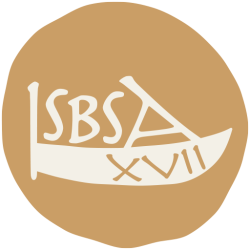17th International Symposium
on Boat & Ship Archaeology
Naples, 21 – 26 October 2024
Proceedings of ISBSA 17 Contribution
We invite you to submit your contributions by January 30, 2025.
We kindly ask that you inform us by December 15 if you intend to publish your paper or poster, so we can begin planning the editorial process.
Please note that the guidelines for both paper and poster presenters are the same, as we have chosen not to differentiate between them.
Should you have any questions, please don’t hesitate to reach out.
The Symposium
ISBSA 17 was held at the National Archaeological Museum in Naples, Italy, from the 21st to the 26th of October 2024.
Registration is now closed.
ISBSA 17 is organized as a collaborative effort of the University L’Orientale of Naples, ISMEO-The International Association for Mediterranean and Oriental Studies, the National Superintendency for the Underwater Cultural Heritage and Honor Frost Foundation.
Call for abstracts
The program committee of the ISBSA called for submissions of papers and poster, consisting of title and abstract of up to 300 words. Proposals for documentary films, to be shown during the conference, were also welcome.
The submission deadline was February 1st 2024.
Themes of the 17th ISBSA
The main theme of the 17th ISBSA was:
State and Private Shipbuilding through the Ages
The main session of the seventeenth International Symposium on Boat and Ship Archaeology intended to explore the theme of state and private shipbuilding within various technical traditions, without chronological or geographical limitation.
Multiple parameters influence the design and construction of a ship/boat. First and foremost are the types of material available—whether locally sourced or imported, harvested in a controlled manner, collected opportunistically, or even reused. Also relevant is the technical culture of the builder and his know-how, the function for which the boat is to be used, and the financial investment of the client. The latter can play a considerable role, depending on whether the client is a private individual, a merchants’ or fishermen’s association, a religious congregation or a state. The design is also likely to be influenced by the political goal being pursued—be that military, prestige, or the objective of a command economy.
Another important parameter is the production system to which the shipyard is attached. This might be a state shipyard, financed and controlled by a political power, of which the arsenal is the most familiar model. Or it could be a private production system, of variable size, organised along artisanal lines. Such diverse production systems inhere different architectural models—uniform in the case of warships, or showing great regional diversity in the case of artisanal fishing or coastal trading vessels. This production system affects the entire “chaîne opératoire” of construction and function, from design to use; this constitutes the main focus of most archaeological research.
To what extent can archaeological, textual, archival, iconographic or ethnographic sources inform us on these important questions, which have had such a strong influence on the history of shipbuilding? How is the difference between state and private construction reflected in both the design process and the organization of the shipyard, in terms of the materials management, the know-how of the various shipbuilding trades, and in technical practices (notably the question of the shipbuilder “fingerprints” as defined by O. Crumlin-Pedersen)? Is there a permeability between vernacular shipyard practices and those of ‘professional’ yards? How do technical innovations circulate, and how are they adopted? How, and to what extent, is knowledge circulated or secretly guarded?
Besides this main theme, the ISBSA 17 remains a forum focused on progress and developments in nautical archaeology and will be open to the following usual themes:
- Ship construction;
- Recent discoveries;
- Research methods;
- Experimental nautical archaeology;
- Nautical ethnography.

